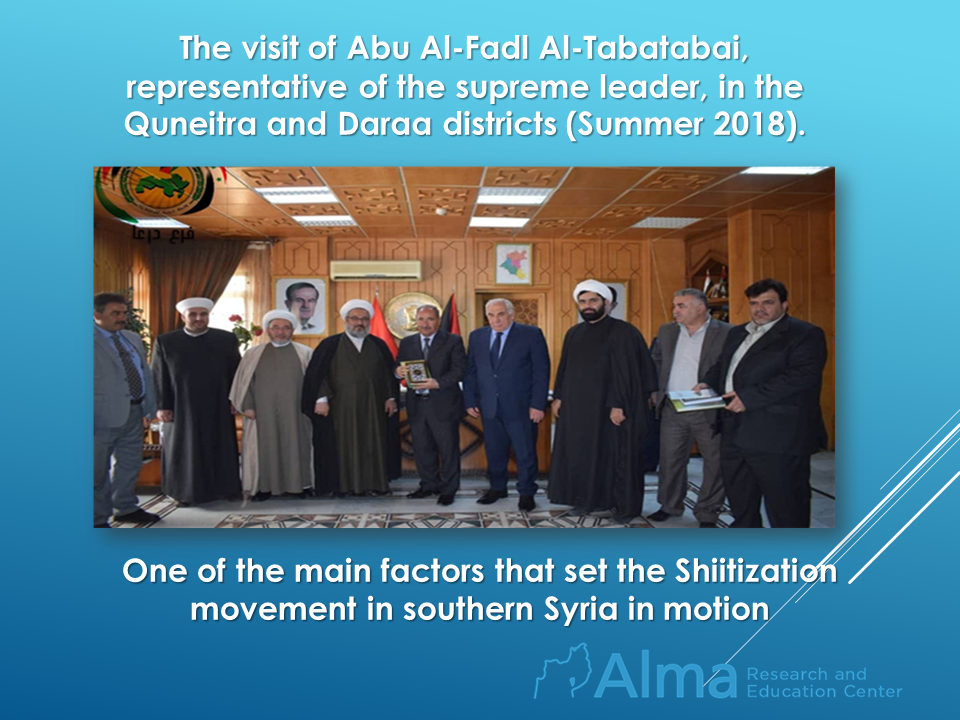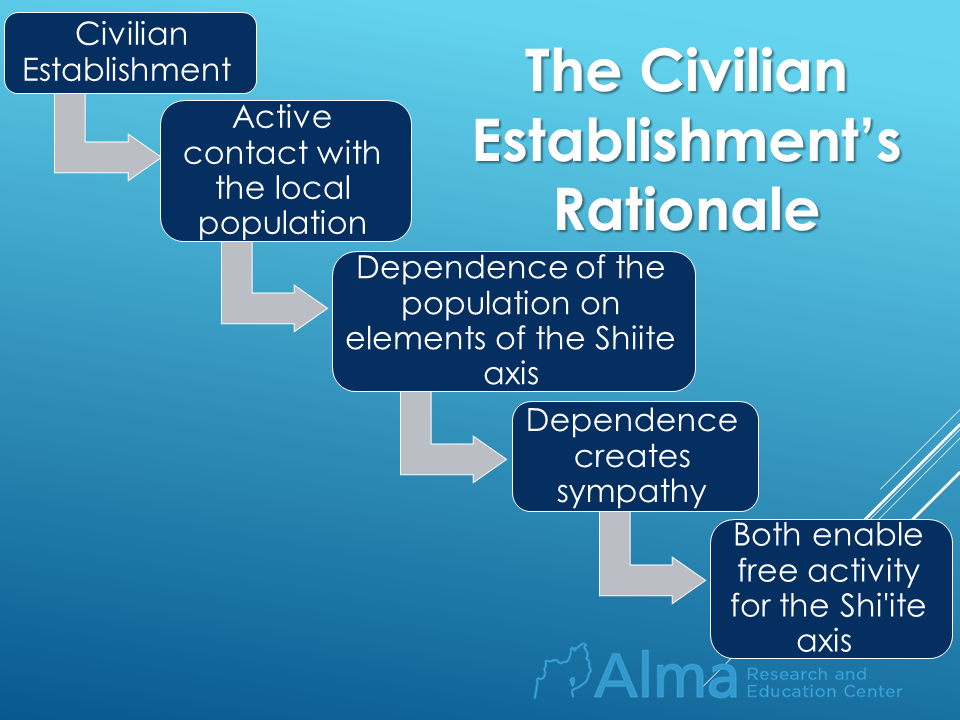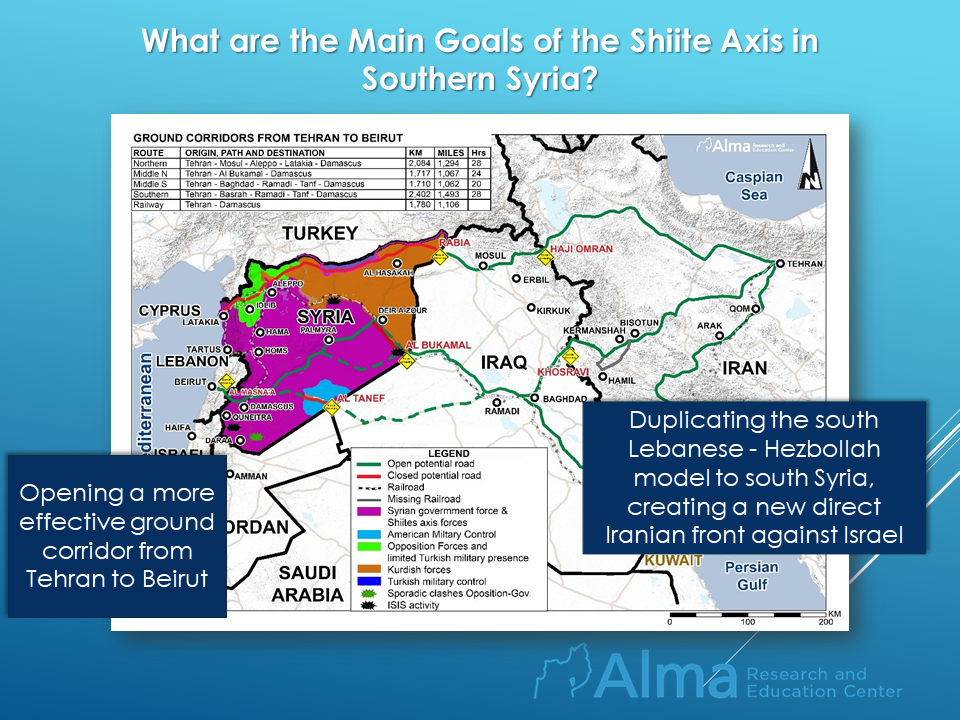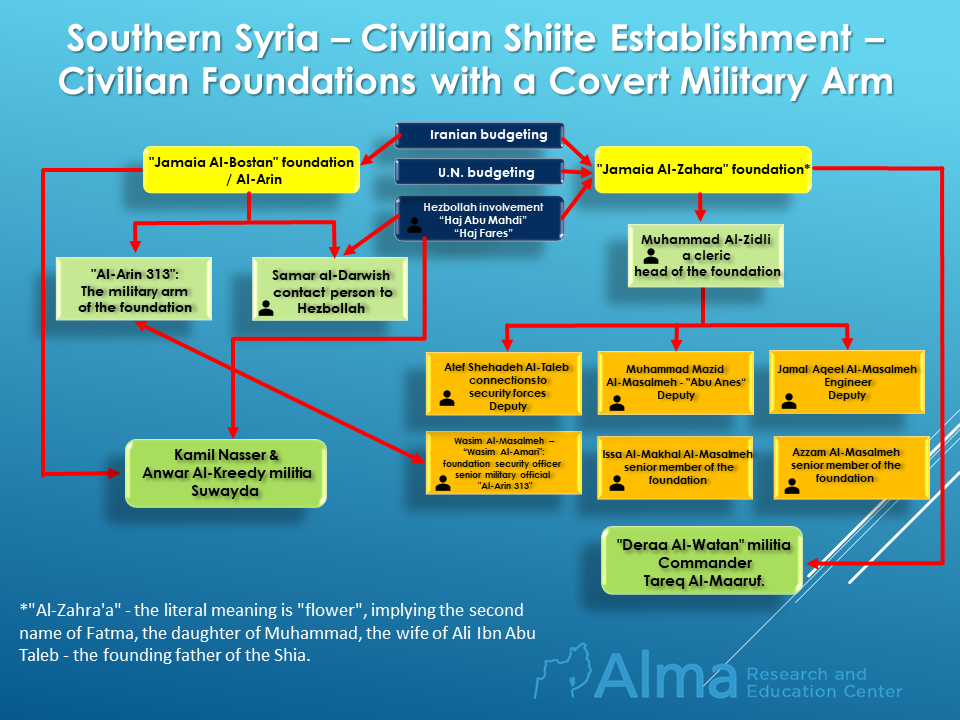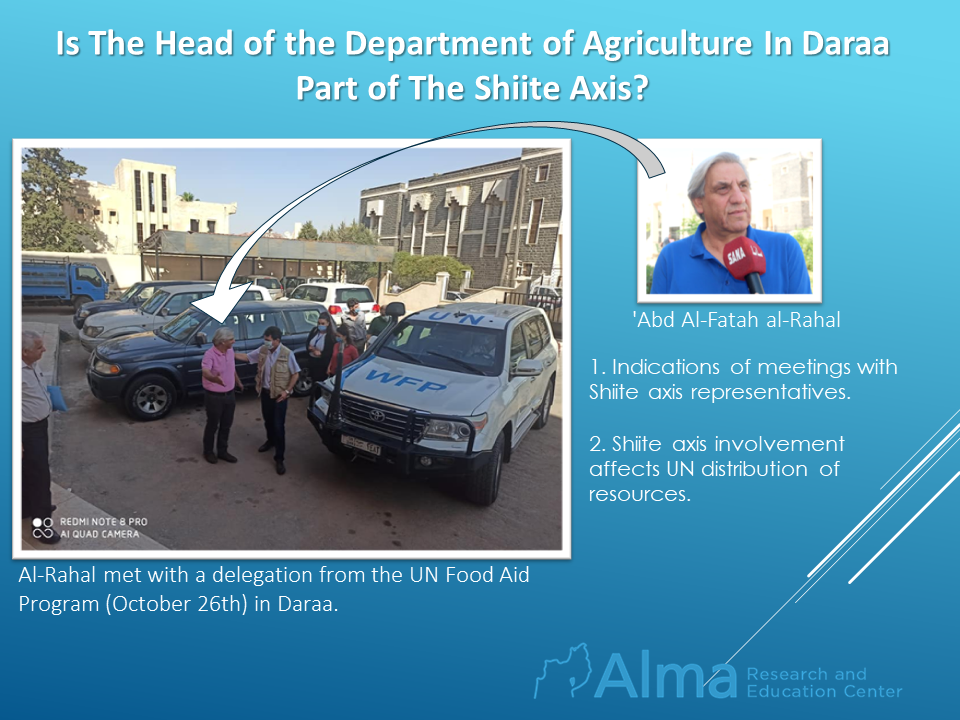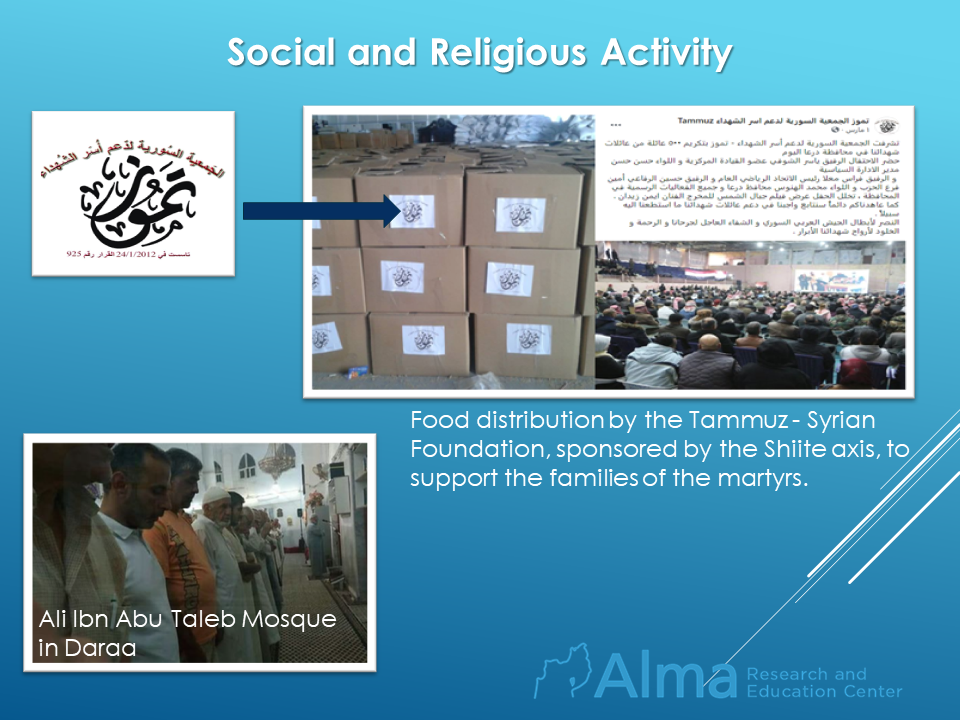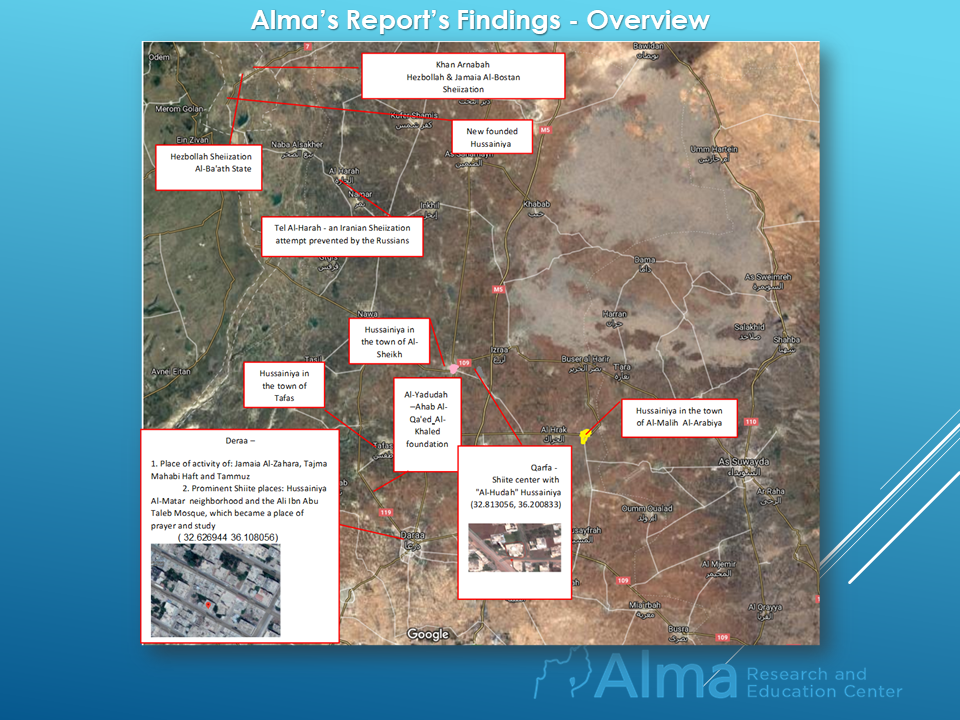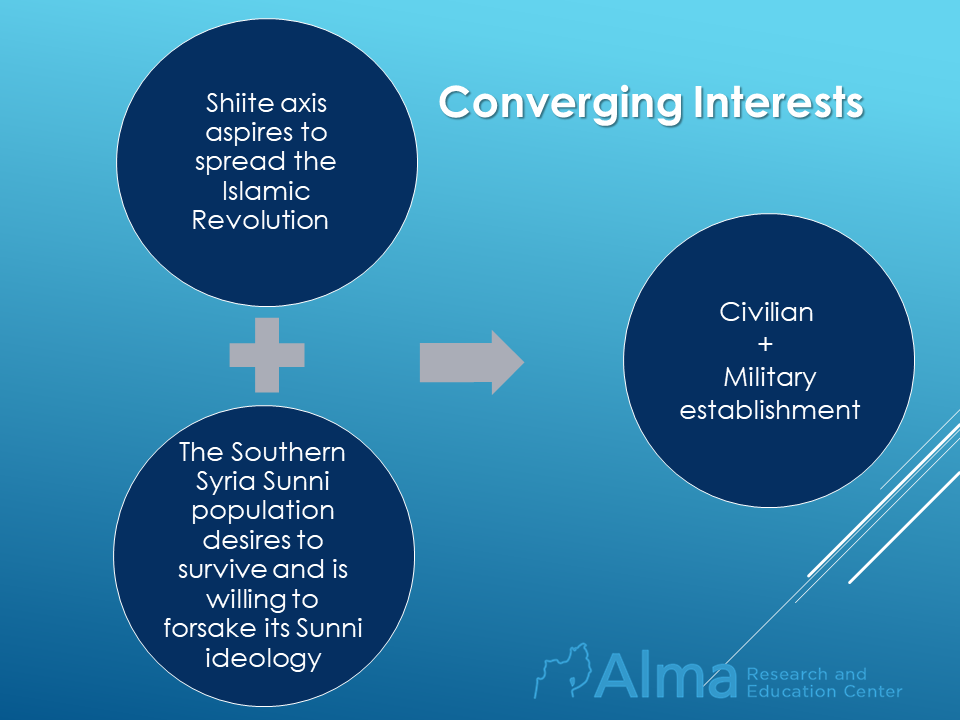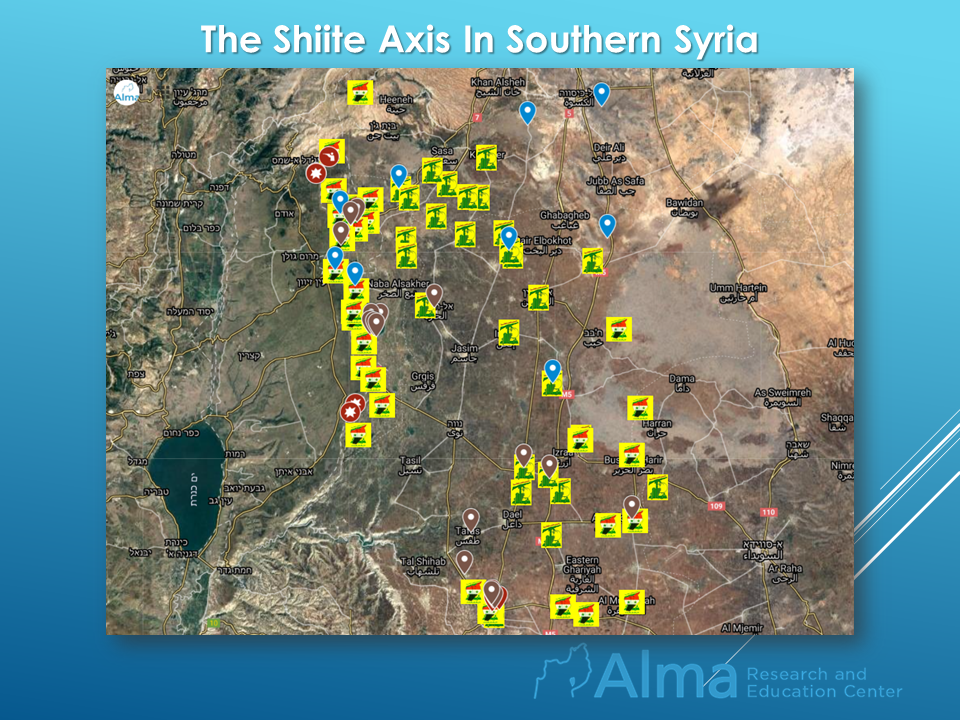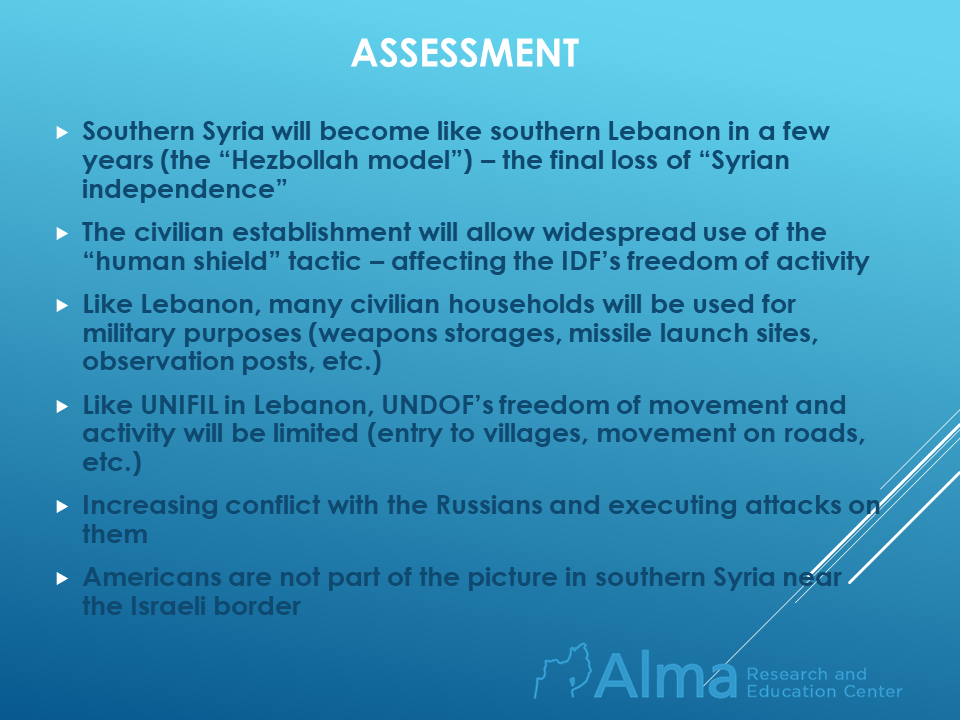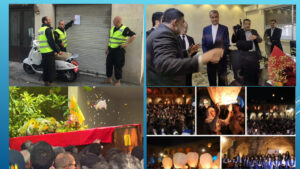Executive summary:
The Iranian-led Shiite axis sees southern Syria as a strategic area of paramount importance aimed at achieving the goal of exporting the Islamic revolution in terms of its civilian establishment. Achieving this objective will be an essential supportive instrument towards the advanced efforts of forming a military foundation, enabling the creation of a direct Iranian front against Israel from southern Syria.
This civilian establishment of founding a foothold in southern Syria creates an active link with the local population to the ends of which is to create a dependence of the population on elements of the Shiite axis. This dependence produces sympathy. This sympathy enables the free action of Shi’ite axis elements inside and out of the local population.
The majority of the Shiite axis civic efforts are concentrated in the Quneitra and Daraa districts of southern Syria. We identify at this point a preference towards the Daraa district. The civic efforts in Suwayda district are encountering many difficulties due to opposition deriving from the Druze population (as opposed to the Druze population in the northern district of Quneitra, which have been collaborating with elements of the Shiite axis since the beginning of the civil war). In light of this opposition, the Shiite axis is currently concentrating its effort in the Suwayda district by cultivating military militias, some of which are assisting in the civilian establishment efforts. (The report mentions four militias operating in Suwayda).
After the reconquest of southern Syria by the Syrian army with the help of Shiite axis officials (at the end of 2018), an accelerated process of civic establishment began with the establishment of “civic foundations”, the takeover of mosques and Hussainiyas (a site for Shiite religious gathering) and the initiation of economic projects. The purpose of all this is to take over civilian life and create a dependency of the local population upon aspects of economics, education, religion, etc.
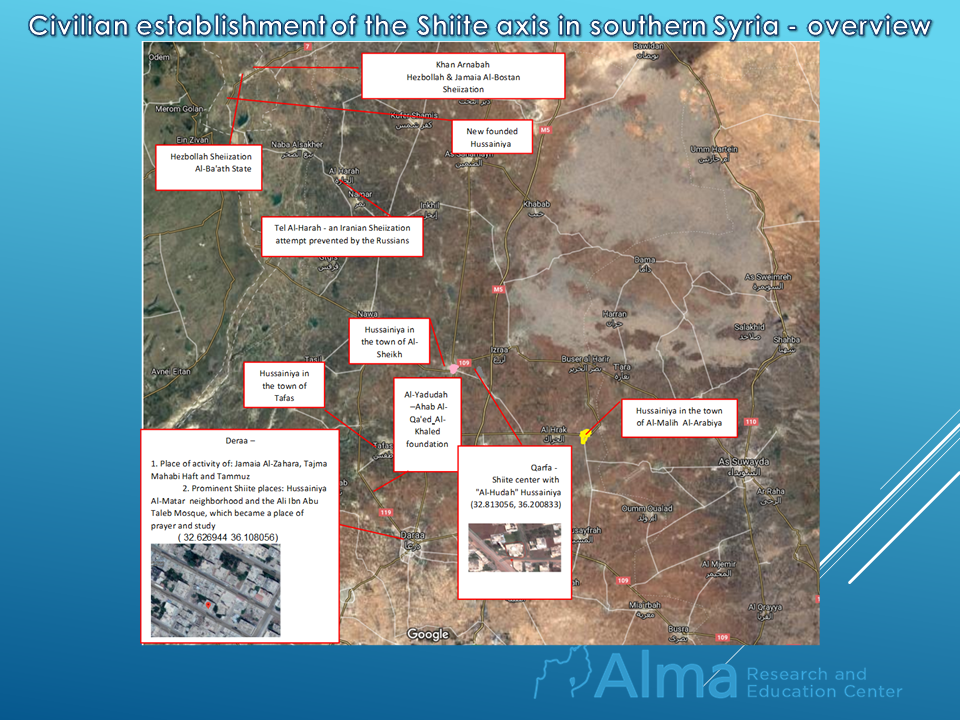
In this report, the Alma Center located not only the assets established by the Shiite axis but also the individuals managing them.
The report lists five “civic foundations” that we identified as operating in the area under the auspices of the Shiite axis. These foundations receive direct funding from Iran and Hezbollah while some are military factions disguised as civilian bodies operating local militias (The most prominent of these foundations are “Jamaia Al-Zahara” and “Jamaia Al-Bostan” or in its new name “Al-Arin”).
Some of these militias have direct Hezbollah appointed directors such as “Haj Abu Mahdi” and “Haj Fares”.
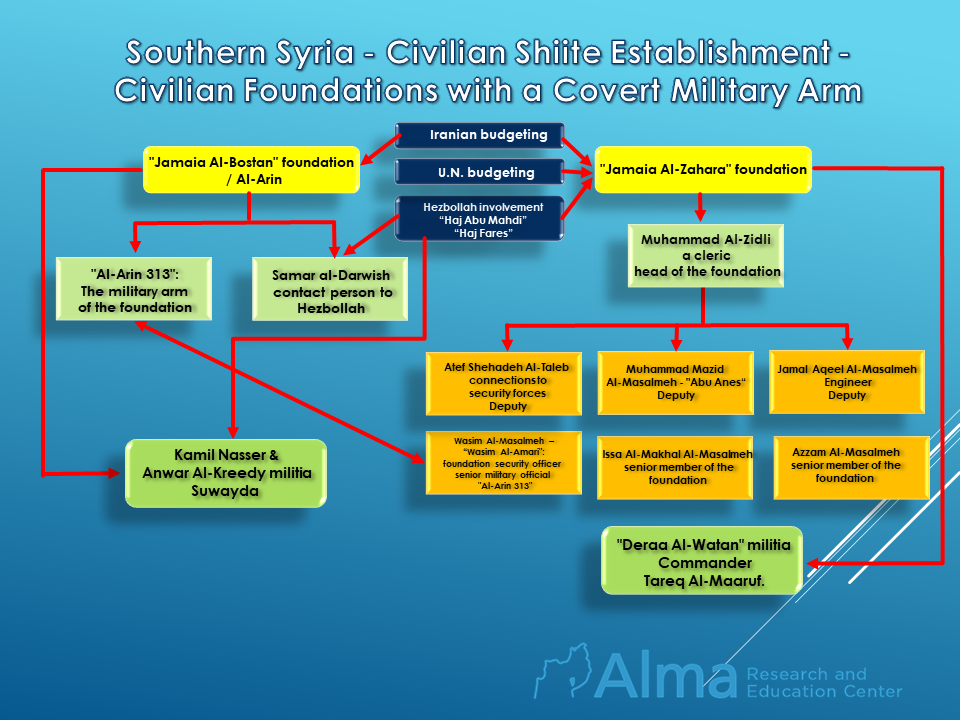
The report lists nine mosques and hussainiyas operating under the auspices and mission of the Shiite axis. Their goal is to create an infrastructure for the Sheiization of the local population.
The report details key individuals from the field of local government and economics suspected of acting as proxies in the interests of the Shiite axis in the region. These include, for example, the head of the agriculture directorate in Daraa, the Mukhtar of the village of Qarfa and businesspersons, some of whom do not even live in southern Syria but have economic interests in the area.
These figures coordinate economic development plans for various geographical areas in southern Syria. These plans designate certain areas for economic development. The Shiite axis actually takes over these territories (for example, areas designated for fish farming and commercial sheep farms in the Kwdana area, agricultural land in the area of the town of Namar in the northern Daraa district, and places designated for economic development in the Yarmouk Basin).
It is known that a Lebanese Hezbollah operative named “Abu Ali Al-Harakhi” runs Hezbollah’s political office in southern Syria and serves as the executive director of economic projects in the region.
From the material collected it can be ascertained, that some of the foundations and some of the individuals are in contact with the UN and are receiving budgets directly from it. For example, the “Jamaia Al-Zahara” foundation receives assistance from the United Nations. Some of the contributions are directed to the budgeting of Shiite militias in the area assisting the foundation (such as the “Deraa Al-Watan” militia under the command of Tariq Al-Maaruf). The head of the Agriculture Department in Daraa is in direct contact with the UN Food Aid Program, which assists with food aid projects intended for the local population. Apparently, these UN resources are exploited and are diverted according to the Shiite axis priorities…


